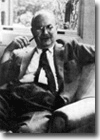| Our Publications | ||
| Books by Title | ||
| Books by Author | ||
| Books by Country | ||
| E-books | ||
| About | ||
| Orchid Press E-books | ||
| Distributed E-books | ||
| Our Bookshop | ||
| About Us | ||
| Browse Shop | ||
| How to Buy | ||
| Contact Us | ||
| WE BUY BOOKS AND LIBRARIES | ||
|
||
Profiles

R. H. van Gulik
…as popular author
by Arthur P. Yin,
his introduction to the second edition of the biography Robert van Gulik: His Life His Work (New York, 1998)Robert van Gulik loved the traditional Chinese novels that I read when I was growing up in rural Hong Kong in the early 1950s. The Romance of the Three Kingdoms, The Water Margin, and Ch’i Hsia Wu I (The Seven Heroes and the Five Righteous) were read by every Chinese boy of my generation. These stories were also the basis for local theatrical performances and comic strip serials; their heroes were pictured in cheap prints that we avidly collected. It was through reading these works that we became acquainted with the traditional Chinese tribunal ruled by a magistrate, in his winged cap, surrounded by his retinue of court personnel. They were the inspiration for our games in which we were brave “Brothers of the Green Woods” or members of the Beggars Guild who hated “dog” officials.
The China that van Gulik had lived in, in which I spent my childhood, was a country in transition. The New Territories of Hong Kong still had verdant vegetable fields tended by hand. We swam in natural watering holes and caught shrimp with our bare hands. Water buffalo, peasants, temples, Buddhist monks, bamboo groves: these were everyday sights. This was the age old Chinese landscape that resonates in Chinese poetry and ci (tze) which were then still being taught to schoolchildren. There were feudal remnants in society as well. Occasionally, old ladies hobbled along on bound feet; some of the mothers of my classmates were concubines. Storytellers riveted our attention with tales of ghosts from Liao Chai Chih I (Strange Stories from a Chinese Studio). Walking home from the city on festival days we would try to blow out the flames of one another’s lanterns with which we were lighting our way and frighten each other by reenacting these ghost stories. Our schooltexts emphasized patriotism and we were inculcated with a keen sense of morality, of righteousness. And I had personal experiences evoking the traditional Chinese sensibility such as being awakened amidst much excitement in the middle of one night by our Buddhist nun neighbors and following them groggily to bear witness to the blooming of flowers that occurred only once a decade. I still remember the fragrance.
It was also a period of transiency. People who succeeded in reaching Hong Kong after the wars were undecided about their next step. Some left for Taiwan, some returned to the Mainland. Those who stayed made numerous moves before settling down. Some of my teachers had been scarred by their wartime experiences. Occasionally we witnessed people going mad, screaming, with untied hair, wielding a cleaver (a traditional Chinese display of madness).
But when my family emigrated to the United States when I was eleven the cultural influences that had formed me receded from my life.
Some twenty five years later I discovered the Judge Dee mysteries. And here, in plain English, was all my Chinese past, personal and literary, once more evoked. The old Chinese locutions: “this insignificant person”; the food: the oily onion cake and jugs of wine that Ma Joong and Chiao Tai enjoy; the traditional Confucian enemies of literature: the nefarious meat eating Buddhist monks. And these mysteries, particularly the earlier ones, not only followed the traditional forms but displayed the social sensibilities peculiar to the China of feudal times as seen, for example, in the intricate play of feelings between Judge Dee and Mrs. Kuo of The Chinese Nail Murders; the terrible, utterly ruthless vendetta extending for nearly thirty years of The Chinese Bell Murders; the tea ceremony described by Master Crane Robe in The Chinese Maze Murders. These mysteries transport us back in time and place; and the solutions to the crimes in the cases brought before Judge Dee are integral to the society over which he presides.
I was immediately hooked by the Judge Dee mysteries which had brought back to me so much that I had nearly forgotten. I can only assume that their appeal for those who have no Chinese cultural roots is similarly based; they convincingly set before the reader a world that has now vanished, or at the least been overlain. And they do so in a form which is popular and accessible.
Once hooked, I became curious about the creator of these mysteries. From the postscripts, and from Donald Lach’s introduction to some of the earlier reprints, I learned that van Gulik had been a dedicated Sinologist. About ten years ago I acquired a copy of the earlier edition of Janwillem van de Wetering’s biography of Robert van Gulik which informed me about van Gulik’s Japanese background and his knowledge of Zen Buddhism as well as of Taoism. This scholarly man, born in The Netherlands, has been fortunate in his biographer. For van de Wetering, too, is Dutch by birth and by inclination a student of Eastern culture and religion. And he, too, has earned international renown for a series of mysteries which reveals to the astute reader a philosophy that informs its principal characters’ lives and provides them with the means of solving the mysteries they confront.
[Read another profile of R. H. van Gulik as diplomat, linguist and Sinologist]
PO Box 70, Trinity TB, NL, A0C 2S0, Canada
Telephone: +1 709-330-4703